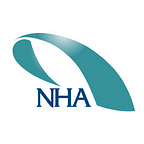Tacoma Power Spawns First Utility-Owned Fish Hatcheries in Washington State
As an extension of its commitment to the protecting the environment and restoring fish populations, Tacoma Power became the first utility in Washington state to manage its own fish hatcheries when it opened two state-of-the-art hatchery facilities at its Cushman Hydroelectric Project in 2016.
“This places us in a unique position for success or failure,” said Keith Underwood, Natural Resources manager for Tacoma Power. “We were very motivated to create well-designed facilities because if they don’t work, it will be up to us to build something different that will enable us to meet our goals. By using advanced technology, processes, innovation and automation, we aim to prove that we can operate more efficient facilities that rear healthier fish than if we had followed a traditional model.”
Since opening the facilities, Tacoma Power has released nearly 500,000 spring Chinook into the North Fork Skokomish River in Mason County, Wash. Tacoma Power is incubating an additional 450,000 spring Chinook, plus coho salmon and steelhead eggs. At the Saltwater Park Sockeye Hatchery, Tacoma Power is incubating 250,000 sockeye eggs.
“It is exciting to see the new Tacoma Power hatcheries up and running,” said Marcia House, a fish pathologist with the Northwest Indian Fisheries Commission. “Allowing outside expertise to be part of the project required hard work for all involved, but the results were well worth it.”
The Cushman Hydro Project has two dams and three powerhouses that generate 134,600 kilowatts of electricity combined. The utility is not only working in uncharted territory running its own hatcheries — fish have been missing from the basin since Tacoma Power constructed its dams in the 1920s and ‘30s.
“Salmon haven’t been running in this river for almost a century,” Underwood said. “Since fish passage and introduction programs are new to the North Fork drainage, we have the opportunity to look at them from a new perspective. We are able to look at the past successes and failures from other programs, learn from them, and develop new strategies to potentially maximize returns and minimize the time it may take to see meaningful results.”
For this project, Tacoma took hatchery technology to the next level. The hatcheries use dual-drain circular tanks that are more efficient, provide better water quality through improved waste drainage, and produce healthier fish that more closely resemble their natural-origin cousins.
“Innovation is one of Tacoma Power’s aspirational values,” Underwood said. “We have a responsibility to our customers and stakeholders to focus on ways to operate more efficiently and cost-effectively; that means having the freedom to explore new technology and operational methods. We don’t want to settle for doing something just because that’s the way it’s always been done. Tacoma Power promotes a culture of innovation as we work together to accomplish our goals, such as returning salmon to the North Fork Skokomish River.”
While the utility had already developed enhanced fish and habitat monitoring practices, as well as collection facilities, the final piece of the puzzle was actually bringing new fish into the waters. Spring Chinook, winter-run steelhead, coho and sockeye salmon were identified as the fish that most closely resemble native stocks. Tacoma worked with consultants and contractors throughout the process, and partnered with a wide variety of federal, state, tribal and local stakeholders to build all of its new fish facilities.
“The Washington Department of Fish and Wildlife believes the recently completed facilities on the North Fork Skokomish River and Saltwater Park will play a critical role in restoring historic salmon species to the region,” said Mark Downen, district fish biologist for the Washington Department of Fish and Wildlife. “The City of Tacoma has demonstrated its commitment to these goals through the construction and operation of state-of-the-art hatcheries, which are designed to integrate salmon hatchery production with the restoration and recovery of native salmon and steelhead.”
Tacoma Power was recognized by the National Hydropower Association for its work on this project. The utility was given a 2017 Outstanding Stewards of America’s Waters (OSAW) Award for Recreational, Environmental & Historical Enhancement.
The award is given to projects that provide enhanced recreational opportunities for the general public, offer measurable benefits that mitigate, conserve, preserve or enhance the natural resources, and/or conserve historical aspects of hydropower facilities and their integration with the surrounding community.
This is the utility’s sixth-straight OSAW Award; four of the six have been for Cushman fisheries projects.
But the end of this project only brings everything back to the start, Underwood said.
“The completion of our Cushman fish facilities is the first important step in what will be a long journey to bring salmon back to the North Fork Skokomish River,” he said.
